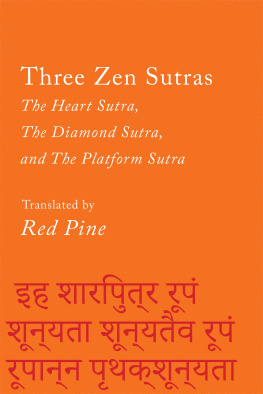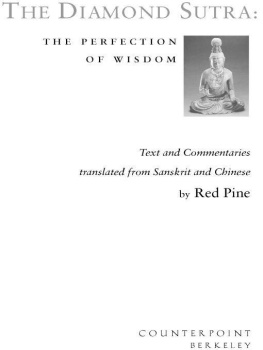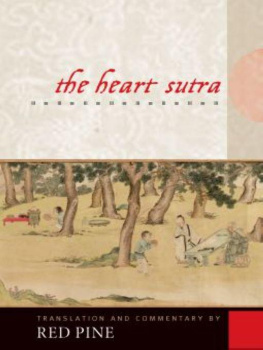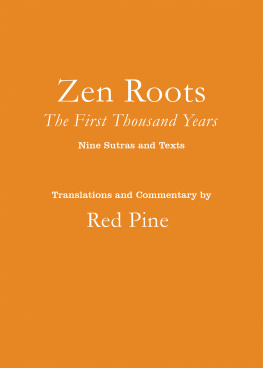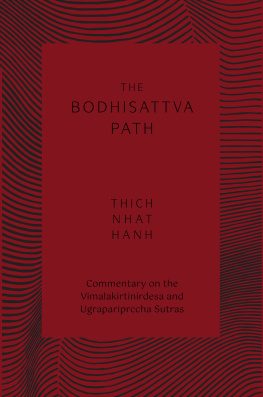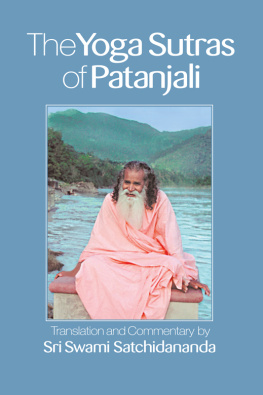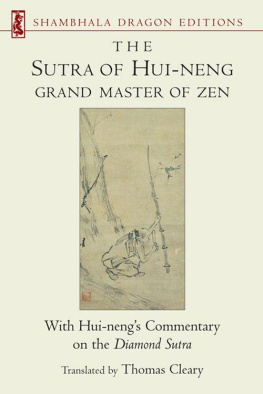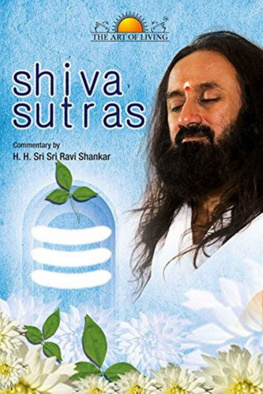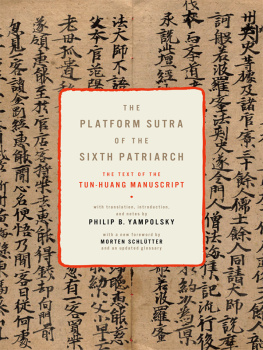Table of Contents
Guide
THREE ZEN
SUTRAS

Contents
W hen the people of ancient India began exploring who they were, they began the same way we might today. They concluded that there was something outside themselves and something inside, and they were somewhere in between. They called the outside rupa, or form, and the inside nama, what you can name but cant see. Over time, they came up with a number of approaches to find the self they were certain was there, each with a different emphasis. For those who focused on the inside, there were the nesting dolls of the skandhas; for those who focused on the outside, there were the sensory-based ayatanas; and for those who focused on both, there were the all-embracing dhatus. Like a doctor prescribing medicine for different ailments, the Buddha sent his disciples on wild-goose chases into each of these realms circumscribing the extent of our awareness. He also prescribed the temporal scheme of the nidanas he used when he achieved Enlightenment, and he even recommended the Four Truths
In the centuries following Sakyamunis Nirvana, a number of sects arose that looked at these quests the Buddha had recommended and concluded that although he had used them to drive home the lesson that there was no self, the realms themselves were realotherwise, why would the Buddha have recommended them? For these sects, the skandhas, the ayatanas, the dhatus, the nidanas, the Four Truths, the Eightfold Path, even nirvanaall of them were real. They called them dharmas, what can be grasped, and made matrices linking them. They held that by studying the relationships among these dharmas they could become enlightened.
This marked the rise of the Abhidharma, or Dharmology, schools, which occurred in the third century B.C . However, not everyone agreed with such a view, and resistance to it eventually gave rise to the Prajnaparamita teachings in the second century B.C. and to such sutras as the Heart and the Diamond soon after. Just as people nowadays believe the world is made of atoms, these Abhidharma schools believed that dharmas were the elemental constituents of our experience of reality, that somehow they existed by themselves. In a worda Sanskrit wordthey possessed sva-bhava, or self-existence. The Prajnaparamita countered this with its own word: sunyata, or emptiness. The proponents of Prajnaparamita werent interested in negating the existence of tables and chairs or form and consciousness, only the self-existence of tables and chairs or form and consciousness. Nothing, they held, exists by itself. In fact, its very thingness is something we bestow on it. Whatever we might designate as an object or a dharma is simply a convenient fiction.
The Heart Sutra applied this view of emptiness to the Abhidharma categories of the Sarvastivadins, as they were the most influential of all the schools that upheld a dharma-based view of reality. This briefest of sutras not only rejected the self-existence of each of the Sarvastivadin sets of dharmas, it presented something in their place, a mantra for chanting to go beyond conception-based understandings of reality. Seeing language itself as an impediment to understanding, teachers of Prajnaparamita were open to alternatives.
The word they chose for their ineffable teaching was a Sanskrit compound made up of prajna, meaning wisdom or knowing, and paramita, meaning supreme or transcendent. They added the adjective paramita to differentiate their knowing from that of others. Unlike many of the sects that developed after the Buddhas Nirvana, they didnt focus on the acquisition of knowledge, or jnana, but on the transcendence of knowledge. Their emphasis was on what comes before knowledge, which was the meaning of the pra (before) in prajna. Knowledge was viewed as delusion posing as truth. Prajnaparamita was interested in the mind before it knowsour original face, as Zen masters came to call it.
When this teaching first appeared two thousand years ago in the Indian subcontinent, it was also accompanied by a change in how those who accepted it viewed the path they should follow. Instead of the quest for nirvana and the end to rebirth advocated by the early followers of the Buddha, the followers of the Prajnaparamita chose the bodhisattva path, leading to enlightenment and no end to rebirth until all beings are liberated.
Among the texts that conveyed this message, none has received a wider or more lasting reception in Asiaor in the Westthan the Diamond Sutra. Considered as dating back to the first century B.C. , if not earlier, it is one of the most profound of all Prajnaparamita texts, focusing on the bodhisattva path itself and what happens to those who choose to follow it.
It begins simply enough with the Buddha returning from his daily begging round and being asked by his disciple Subhuti how people should set forth on the same path the Buddha followed. The Buddha responds by telling Subhuti and all those present that they should vow to liberate othersnot just themselves, but all others. What follows is an account of how people become buddhas and the importance of meritmerit being the spiritual result of a spiritual act. The Buddha tells an audience of monks and lay followers that if they can do as he suggests, and do so without being attached to the idea they are liberating anyone, they will obtain a limitless, inconceivable body of merit.
The Buddha then asks Subhuti if he sees him. This seems like an odd question at first, but it is the question around which this sutra turns. Subhuti already understands the Buddhas teaching of emptiness, that anything one might point to is only real in the sense that it is being pointed to and otherwise empty. Naturally, this would include the nirmana-kaya, or body of physical attributes, which the Buddha himself acquired when he became a buddha, so Subhuti answers, No.
Taking Subhuti at his word, that he wants to know how to follow the bodhisattva path, the Buddha introduces him to what underlies that path. The Buddha tells him, By means of attributes that are not attributes, the Tathagata can, indeed, be seen. The body he wants Subhuti to see is the one he himself acquired when he began his own journey on the bodhisattva path, the one those who vow to liberate others likewise acquire.
The sutra then becomes a revelation of the spiritual reality of the path introduced to the Buddhist world by the Prajnaparamita teachings. However, being one of the briefest of such texts, it limits itself to the beginning and the end of that path. Also, as the Buddha focuses on these, he reiterates that he speaks only of what isnt realthe implication being that what is real cant be spoken of. This is not only true of the body of attributes he acquired when he became a buddha but also of the body of attributes that were not attributes he acquired when he first set forth on the path. Both bodies, it turns out, are mere flashes of lightning. The only thing real is the Dharma, represented in this sutra by the Prajnaparamita, a teaching that turns out to be no teaching.
It was this teaching, in the form of the Diamond Sutra, that Huineng ( A.D. 638713) heard when he was delivering a load of firewood. That was all it took to set him off on the journey that led to the Platform Sutra and to the spread of Zen throughout the world.
Of all the Buddhist texts originating in China, the Platform is the only one with sutra in its title. Huinengs followers viewed him as a buddha, and the sutra title stuck. The majority of the text records a talk Huineng gave while conferring the Zen precepts on a mostly lay audience numbering in the thousands. Huineng gave this talk in 681, ten years after he became the Sixth Patriarch of Zen and thirty-two years before he died. The talk was given in Shaoguan , a town two hundred kilometers north of the southern port city of Guangzhouand twenty kilometers from Mount Caoxi , where Huineng lived and taught. This region wasnt a stronghold of Chinese culture in those days, and Huineng himself was only half Chinese. His father was a banished official from North China who died shortly after Huineng was born, and he was raised by his mother, who belonged to one of the non-Han ethnic groups that made up a majority of the population in much of South China during the Tang.

